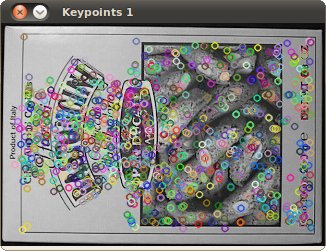 |
OpenCV
3.0.0
Open Source Computer Vision
|
All Classes Namespaces Files Functions Variables Typedefs Enumerations Enumerator Properties Friends Macros Groups Pages
 |
OpenCV
3.0.0
Open Source Computer Vision
|
In this tutorial you will learn how to:
This tutorial code's is shown lines below.
Here is the result of the feature detection applied to the first image:

And here is the result for the second image:

 1.8.7
1.8.7